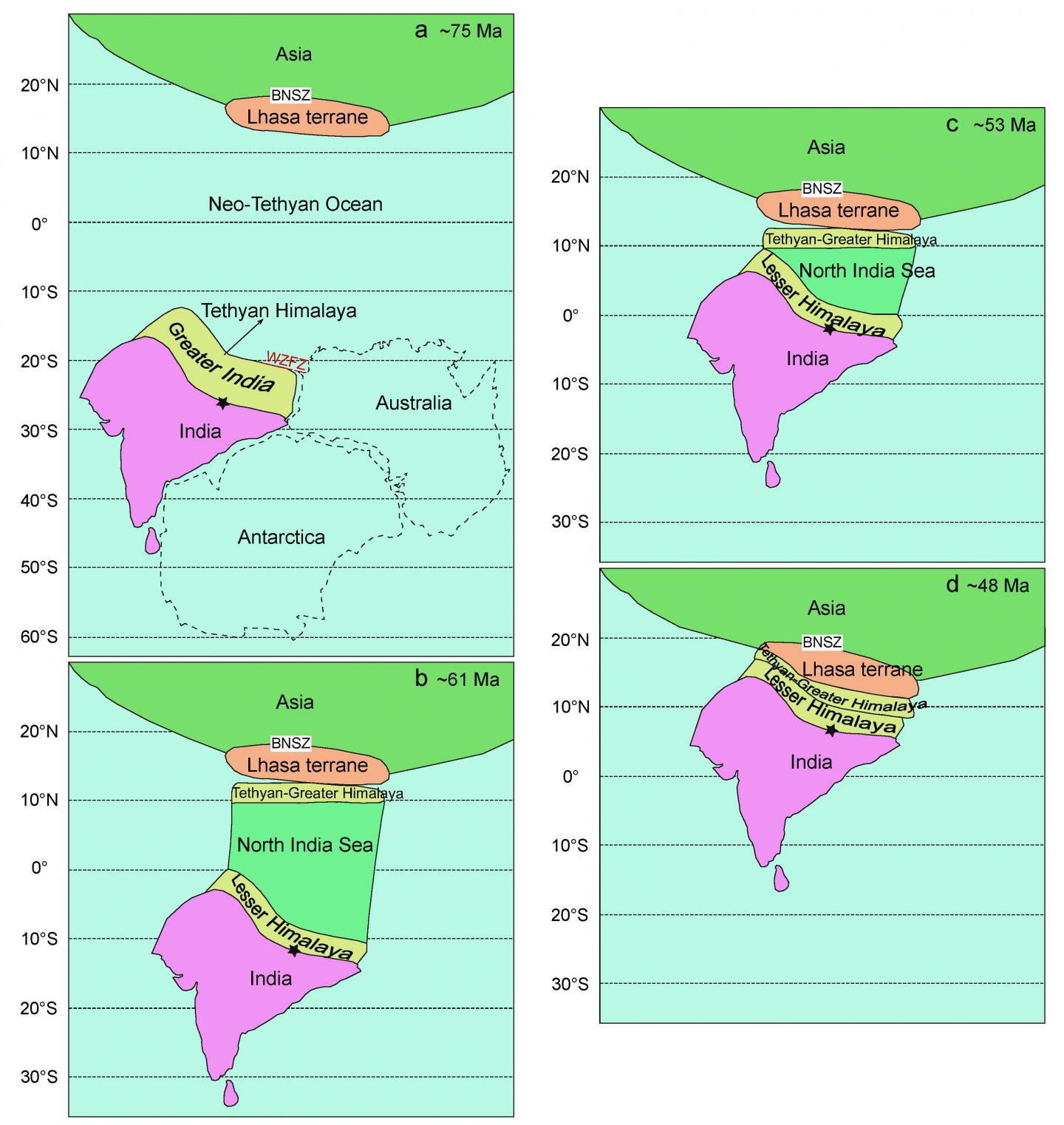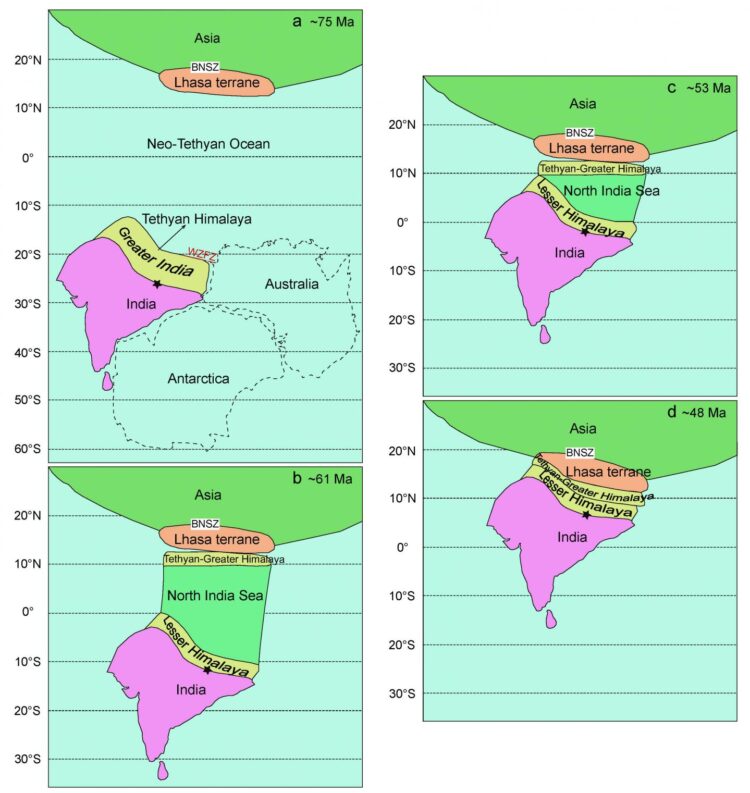
Credit: ©Science China Press
To elucidate the timing, location and geodynamic models of the India-Asia collision, Yuan and colleagues conducted paleomagnetic and rock magnetic analyses on two key successions that were deposited on the distal northern part of the Indian passive margin (Tethyan Himalaya terrane), where Upper Cretaceous oceanic red beds (CORBs) of the Chuangde Formation are exposed in the Cailangba A and B sections of the Gyangze area, and Upper Cretaceous to Paleocene red siliceous shales of the lower Sangdanlin Formation are exposed in the Sangdanlin and Mubala sections of the Saga area. The lower Sangdanlin Formation contains the first Asian detritus, and thus determines the collision age.
Paleomagnetic and rock magnetic analyses reveal that these rocks comprise i) secondary magnetic signals carried by chemical hematite and ii) primary magnetic signals of dual polarities carried by detrital hematite. These results indicate that the Tethyan Himalaya terrane was situated at a paleolatitude of 19.4° ± 1.8°S during the late Cretaceous (76.2-74.0 Ma) and moved rapidly northward to reach a paleolatitude of 13.7° ± 2.5°N in the mid-Paleocene (62.5-59.2 Ma). The late Cretaceous results show that at ~75 Ma the Tethyan Himalaya terrane was still significantly separated from the Lhasa terrane by ~3600 km.
The new paleomagnetic data sets imply that the Tethyan Himalaya terrane rifted from India after ~75 Ma, generating the North India Sea. This study further documents a new two-stage continental collision. The northward drifting Tethyan Himalaya terrane collided with Asia at ~61 Ma, and then amalgamated with India with a diachronously closing North India Sea between ~53 Ma and ~48 Ma. This new scenario matches the history of India-Asia convergence rates and reconciles multiple lines of geologic evidence for the India-Asia collision.
This new two-stage collision hypothesis between India and Asia provides crucial constraints for continental collision dynamics, the uplift and deformation history of the Tibetan Plateau, and paleogeography and biodiversity patterns in Asia. Furthermore, the new findings provide key boundary conditions for climate models linking Himalaya-Tibetan orogenesis with global climate change.
###
See the article:
Yuan J, Yang ZY, Deng CL,?Krijgsman W, Hu XM, Li SH, Shen ZS, Qin HF, An W, He HY, Ding L, Guo ZT, Zhu RX, 2020. Rapid drift of the Tethyan Himalaya terrane before two-stage India-Asia collision. National Science Review. DOI: 10.1093/nsr/nwaa173
Link:
https:/
Media Contact
Chenglong Deng
[email protected]
Related Journal Article
http://dx.





